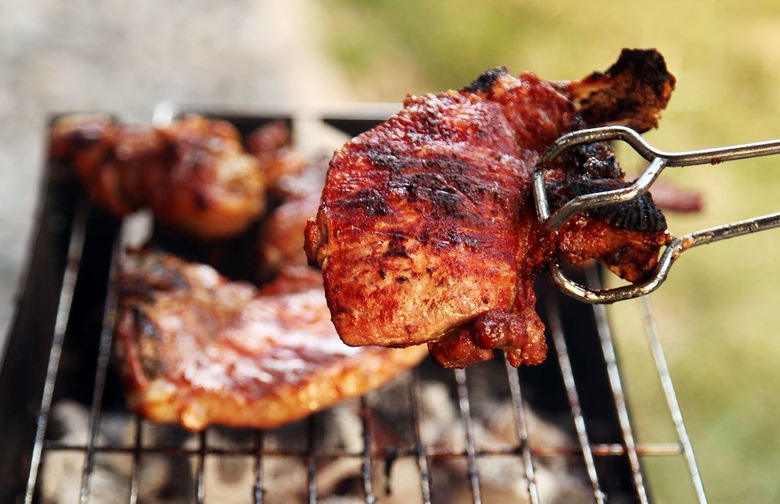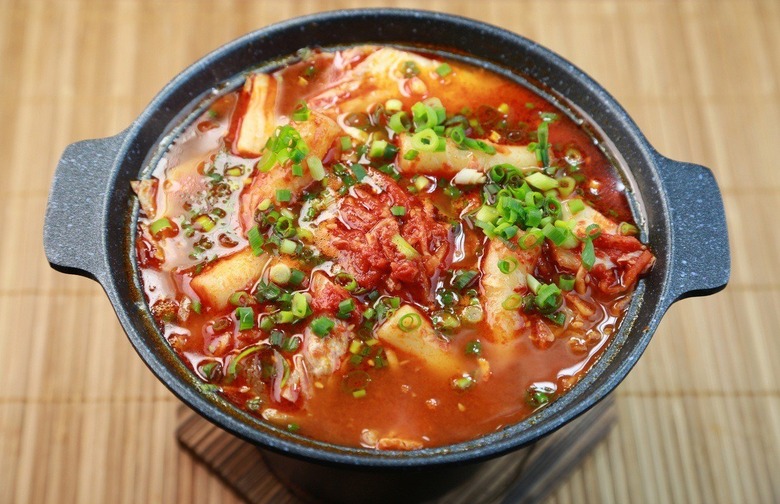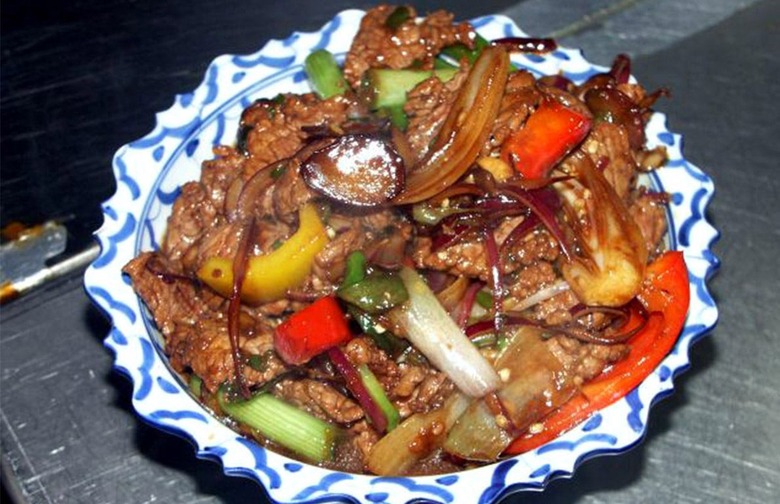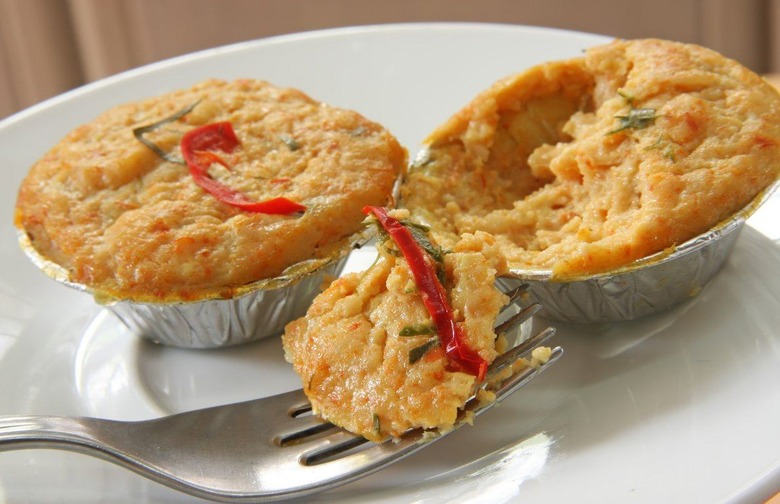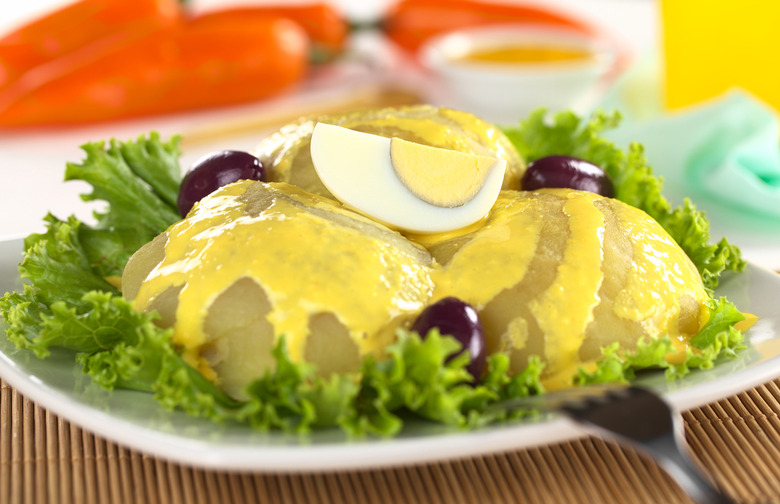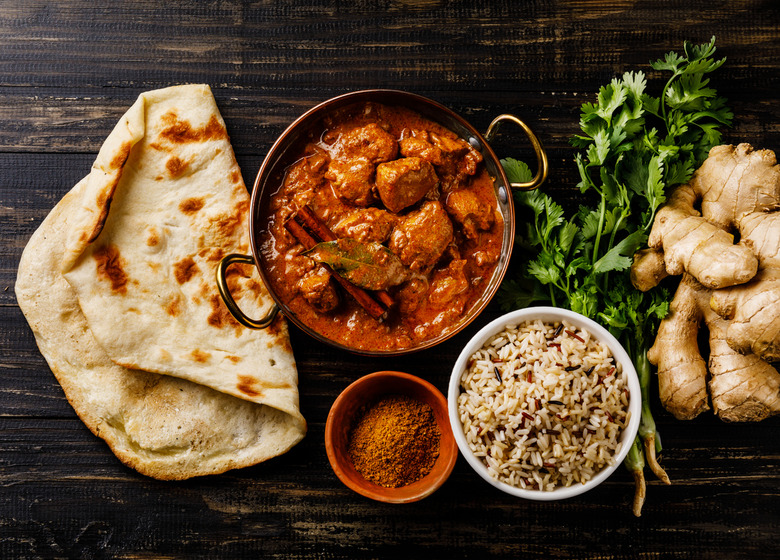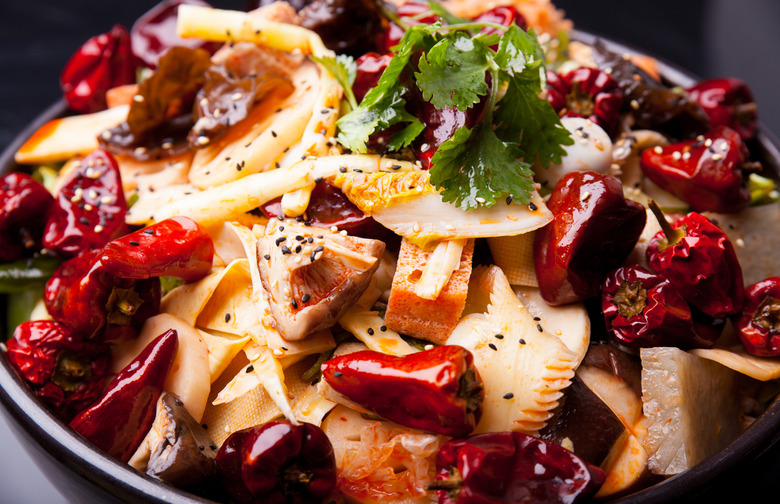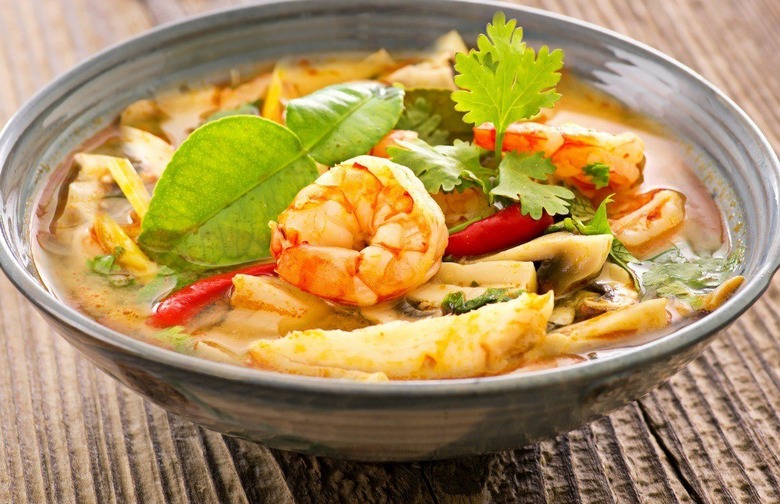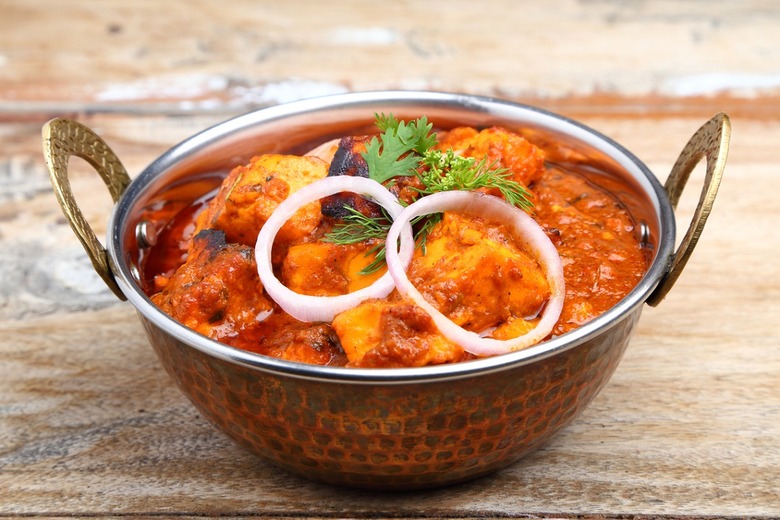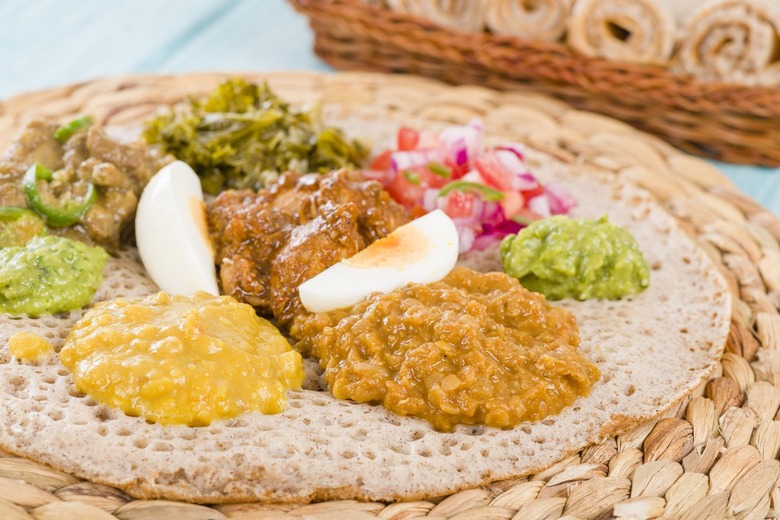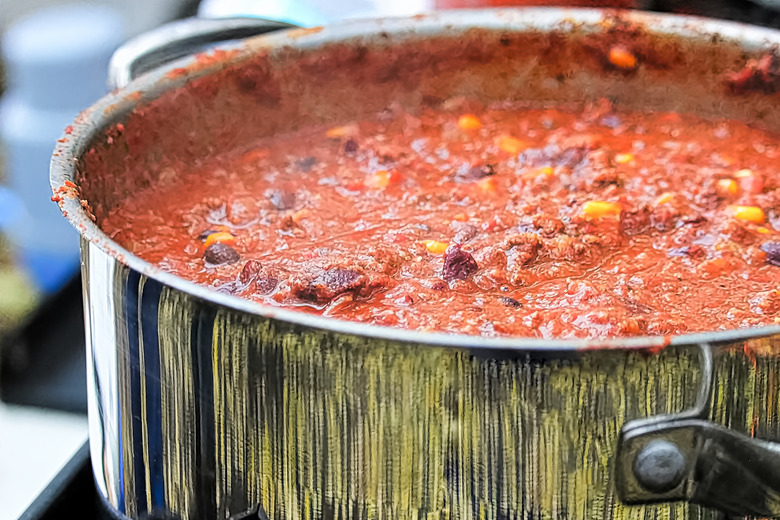The World's Spiciest Foods Gallery
We know what you're thinking: Wouldn't the spiciest foods simply be various peppers? Of course. But unless you're entering some sort of contest or looking for a way to go on a trippy spiritual journey, eating straight-up peppers is not advised. Not only will they instantly liquefy your soul, but they don't make for a very hearty or balanced meal.
The 11 foods on this list, however, are not only incredibly spicy, but are quite popular as well. They range from soups and stews to meats and vegetable platters, and span numerous countries and continents, yet can still be found at ethnic restaurants in America and can even be made at home.
The next time you're looking for something spicy, skip the obligatory chicken wings (don't worry, you can always get those next time), and brave one of these foods instead. Or, if you can't stand the heat, consider this a list of dishes to avoid.
But where's the fun and gastrointestinal discomfort in that? Click on to discover the world's spiciest foods!
Jerk Chicken
Let's ease into this list with a dish many people already know: jerk chicken.
This sweet, tangy, and spicy meal is the most iconic food in all of Jamaica, even though most folks have no idea how it gets its spiciness. The key ingredients are scotch bonnet or habanero peppers and allspice, along with cloves, cinnamon, scallions, nutmeg, thyme, and garlic.
Click here for a delicious jerk chicken recipe you can make at home.
Kimchi Jjigae
We assume you've had kimchi before (if not, where have you been?), but you likely haven't sampled this especially spicy version.
There no secret ingredient here, just green onions, garlic, tofu, mushrooms, and a whole lot of red chiles. Instead, the technique is the key, as this Korean dish is slowly simmered until the stew is fully infused and the broth reaches the preferred amount of spiciness. To top things off, kimchi jjigae is served boiling hot, so you might want to consider eating a fire extinguisher, too.
Cooking at home? Try this delicious Kimchi-Braised Chicken recipe!
Neua Pad Prik
Also known as "Thai pepper steak," this dish is simple, spicy, and a staple of the region's cuisine.
To prepare, just cook seasonings such as shallots, basil, and garlic with a few pieces of sliced beef and there you have it. Oh yeah, don't forget about all the bird's eye chiles, which rank somewhere between tongue-meltingly hot and face-meltingly hot on the Scoville scale — or about 100,000-225,000 Scoville heat units.
Otak-Otak
Otak translates to "brain" in Indonesian and Malay, but the term is just a description of the dish's appearance and not a nod to its ingredients. (Thankfully!) Otak-otak is actually a grilled seafood cake made of ground fish, tapioca starch, and spices, and is served wrapped inside a banana leaf. Those spices include belacan and galangal (a root crop that looks like ginger but tastes like pepper), as well as some of the hottest peppers available in the region. While the Indonesian variety is whitish in color, the Malaysian and Singapore versions are reddish-orange or brown due to the addition of chili, turmeric, and curry powders.
Papa a la Huancaina
The Peruvian dish papa a la huancaina is probably the most unassuming member of this list. The name includes the word "papa," it's served cold, and just look at it — it kind of resembles some type of hard-boiled eggs Benedict dish. But that ain't hollandaise on top; it's a yellow cheese sauce made with aji amarillo (hence the yellow color) and habanero peppers — a tag-team combination that is sure to give you a spicy, flavorful body slam. But don't tap out just yet, because the potatoes and eggs underneath are more than worth the intensity on the tongue.
For another spicy, Peruvian egg dish, try this recipe for picante de heuvos from the cookbook Andina: The Heart of Peruvian Food.
Phaal Curry
Curry can occasionally get pretty spicy, and phaal curry is probably the most intense version around. It originated in the Indian restaurants of Birmingham, England, where local chefs decided to throw a whole haul of spicy peppers into the typical dish, which is usually just made with standard chiles, a thick tomato base, ginger, and sometimes fennel seeds. New York City's Brick Lane Curry House makes one of the most famous (and hottest) examples in existence, using 10 types of peppers, including the scotch bonnet, habanero, and ghost peppers.
Sichuan Hot Pot
China's Sichuan cuisine is often referred to as one of the hottest types in the world, and their version of hot pot is a reflection of this. (Although, as a former resident of the arguably spicier Hunan province, I take exception to this statement.) Garlic, onion, and Sichuan peppers mingle with meat, vegetables, mushrooms, and anything else you care to toss into the mouth-numbing pepper oil broth, such as pig brain or duck blood. Like we said: anything. If the hot temperature of this soup doesn't make you sweat, the spiciness will, so you might want to wait for the winter months.
Click here for eight regional Chinese dishes to help fight cold weather.
Tom Yum
This sour and spicy soup hails from Thailand (and is also popular in neighboring Cambodia, Brunei, Malaysia, and Singapore), where we're already well aware the locals know something about adding a kick to the cuisine. And similar to the neua pad prik, this dish also includes the bird's eye pepper, in addition to ingredients like lemongrass, kaffir lime leaves, lime juice, galangal, and fish sauce, as well as spicy meats and/or seafood. (Ask for "tom yum goong" if you want prawns, or "tom yum gai" for chicken.) Thankfully for unwary first-timers, the broth is generally bright orange or red in color to reflect the heat — kind of like a culinary traffic light telling diners to tap the brakes.
Click here for a tom yum goong recipe that's authentic and certain to satisfy.
Vindaloo Pork
A rival of the aforementioned phaal in the spiciness game, vindaloo is a similar curry dish that's also known for its spiciness.
Click here for some vindaloo recipes to try at home.
In adapting this dish from a Portuguese pork specialty preserved in red wine, peppers, and garlic, Indian chefs swapped the wine out for palm vinegar, added spicier red peppers, and made it curry-based. The precise amount of spice depends on the exact peppers used. It was traditionally made with Kashmiri, but nowadays you're more likely to see the dreaded ghost pepper brought into the fold.
Wat
Wat is an Ethiopian stew or curry made with chicken, beef, lamb, vegetables, spices, and a clarified butter. Differentiating itself from other stews, wat preparation begins with chopped onions that are slowly cooked without fat or oil in a dry skillet or pot. Only then are the onions and other aromatics sautéed in fat (and an excessive amount, at that), allowing for the onions to break down and thicken the stew. Wat is traditionally eaten on top of injera, a spongy flatbread made from teff. As for the spice, that comes from the addition of the seasoned butter and berbere, a spice mixture consisting of chiles, garlic, ginger, basil, korarima, rue, ajwain or radhuni, nigella, and fenugreek.
Wiggum Chili
Originally conceived by an American police chief for a chili cook-off, the key ingredients in this dish are the merciless peppers of Quetzlzacatenango, which are grown deep in the jungle primeval by the inmates of a Guatemalan insane asylum. These chiles are so hot that they are said to have induced hallucinations in a few unfortunate diners who downed too many at once, and they may have led to the temporary disappearance of one man who wandered off under the influence. Proceed with caution. If for some reason, any of these foods are too mild, then simply pile on a quarter cup or so of one of the world's hottest hot sauces, right? What could possibly go wrong?
